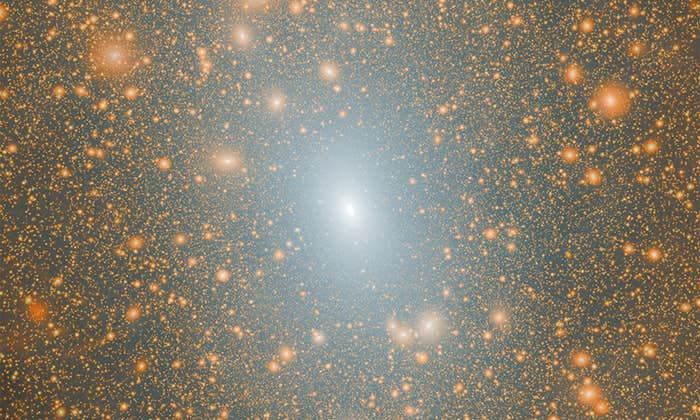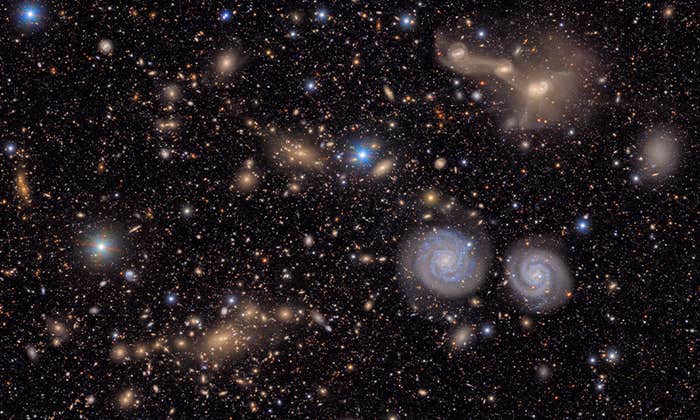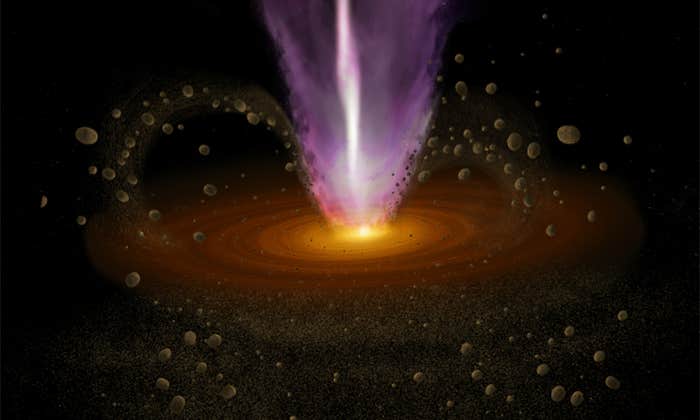Rogue planet. The term suggests a loner—a rebel refusing to play by the rules, breaking with tradition, going anywhere in the galaxy it pleases. Labels such as “rogue,” “nomadic,” and “wandering” are common in the media coverage of the recent discoveries of planets that might not be in orbit around any star. The romantic anthropomorphism is understandable. It’s also inaccurate. What’s potentially important about these objects isn’t that they’re the James Deans of the cosmos. They’re not. Their significance, if they exist, would be even more radical: They could be the new normal.
Consider CFBDSIRJ214947.2-040308.9, or 2149 for short. It was discovered in 2009 about 80 to 160 light years (about 600 trillion miles) from Earth. In astronomy jargon, 2149 is an Isolated Planetary Mass Object (IPMO). An IPMO could be a star that never ignited, or a planet that has lost its way, but in either case it doesn’t appear to be orbiting a sun.
The romantic anthropomorphism is understandable.
It’s also inaccurate.
If 2149 is a failed star, then it’s much less interesting—failed stars are a well-known phenomenon. Even if 2149 is a planet, it’s not engaged in any act of metaphorical rebellion. It’s not wandering the heavens. It isn’t breaking any law—especially the law of universal gravitation. Like everything else in the Milky Way, it is simply orbiting the center of the galaxy (though not also orbiting a star, as Earth does the sun). What would be revolutionary about a planet-like 2149 wouldn’t be where it’s going. It would be how it got there.
If 2149 is a planet, it was probably born in the swirl of gas and rocks that attends the formation of a star. At some point in the great gravitational choreography of embryonic planets, one or more of its bigger siblings would have ejected it, as if letting go of a dance partner. Because heavier objects are more difficult to eject than lighter objects, and because 2149 is pretty big—probably at least the size of four Jupiters1—its ejection would imply that the ejection rate of puny planets, like Earth (at least a thousand times less in weight), should be even higher.
How much higher? In 2011 the Microlensing Observations in Astrophysics project concluded that, based on their own survey of IPMOs, the galaxy might contain twice as many starless planets as stars—and the galaxy has at least 100 billion stars. The following year, researchers at Stanford’s Kavli Institute for Particle Astrophysics and Cosmology revised that estimate upwards by a factor of 50,000, which means there could be 10 quadrillion starless planets in our own galaxy. The very existence of a planet such as 2149 would support these calculations.
But, is 2149 actually a planet? It was discovered in 2009 by a collaboration of astronomers led by Philippe Delorme of the Institut de Planétolgie et d’Astrophysique de Grenoble, as part of a search for a species of cosmic objects called brown dwarfs. Brown dwarfs have a mass greater than thirteen Jupiters but less than 75 to 80 Jupiters, the mass at which they would be able to maintain hydrogen-1 fusion reactions in their cores. They’re still stars; they just haven’t ignited. They do, however, faintly radiate, perhaps because of stored energy. Just as you can use infrared goggles to detect body heat at night, so astronomers can use infrared telescopes to detect sources of celestial heat—whether brown dwarfs or not. (If you could see 2149 up close, it would appear purplish-red.) If 2149 is a brown dwarf, it’s rather less exceptional—one of many with no implications for planetary ejection rates.
At some point in the great gravitational choreography of embryonic planets, one or more of its bigger siblings would have ejected it, as if letting go of a dance partner.
Just because 2149 was found in a hunt for brown dwarfs, though, doesn’t mean it is one. Planets also radiate in the infrared. So how do we tell what manner of object 2149 represents?
A key to this question is its mass. Astronomers often confer the title of “planet” on an object with a mass less than thirteen Jupiters—the minimum amount of mass necessary for a star to ignite (for deuterium to achieve fusion). The lower 2149’s mass is, the more likely it is to be a planet. Since the 1990s, astronomers have been inferring the mass of distant planets by measuring either the wobble of the star as the planet orbits it, or the dimming of the star as the planet passes in front of it. Neither option is available, however, for an object not orbiting a star.
Instead, astronomers have taken recourse in numerical models, which use an object’s light spectra to predict its mass and age. During follow-up observations of 2149 with the European Southern Observatory’s Very Large Telescope in Chile, in 2010, Delorme’s group measured 2149’s spectrum and bound its mass at a relatively light four to seven Jupiters, and its age between 20 million and 200 million years. The numerical-model technique, however, can be “very uncertain,” according to Delorme. So how can they know if their model is correct?
Usually, as in the case of the Microlensing Observations in Astrophysics project, astronomers studying IPMOs can’t know. But 2149 might offer an independent test of the model’s results. Delorme suspects that 2149 is at the same distance from Earth as a collection of stars that are traveling in formation with the star AB Doradus, about 100 light years from Earth. If 2149 is, in fact, traveling with the AB Doradus group, then it was likely formed at the same time that the group’s stars were formed: from 50 million to 120 million years ago—a good match with the age from the numerical model. And if the initial model’s age estimate is correct, then it is likely that its mass estimate is also correct.
Delorme’s collaboration puts the likelihood of 2149 belonging to the AB Doradus group at 87 percent—a moderate level of confidence, but hardly enough to claim a discovery. So they have begun pursuing a more precise way of determining whether 2149 is part of the Doradus group: parallax.
Astronomers often confer the title of “planet” on an object with a mass less than thirteen Jupiters—the minimum amount of mass necessary for a star to ignite.
Just as we as a species use binocular vision to gauge distance and motion in 3-D, so astronomers use binocular vision, only in their case the “left eye” and “right eye” correspond to points in Earth’s orbit when our planet is on opposite sides of the sun, six months apart. These observations will require several sets of six-month intervals, but if they do show that 2149 moves with the Doradus group, they will support the hypothesis that 2149 has a mass between four and seven Jupiters, and increase the likelihood that 2149 began life as a planet, not a failed star.
Such is the state of star-formation knowledge today, Delorme tells me, that the attendees at a May 2013 conference on brown dwarfs were sharply divided about 2149: approximately 60 percent voted that it is “a brown dwarf that happens to be quite light,” while 40 percent suspected it to be a planet. Even he believes it is more likely to be a brown dwarf, though he adds that “this is not grounded in any robust fact, it is just a gut feeling.”
This gut feeling is rooted in Occam’s razor: The simplest explanation for 2149, given the current understanding of planet ejection rates, is that it is a failed star. But it only takes one identification of a planetary IPMO to make all the difference. If future observations produce certifiable planets, the extrapolations might just make Occam’s razor cut the other way.
A Guggenheim Fellow in Science Writing, Richard Panek is the author of The 4% Universe: Dark Matter, Dark Energy, and the Race to Discover the Rest of Reality.


























